#Mainichi designs
Text

Unknown Designer, cover for 100 Photographers Faces and Works
Mainichi Newspaper Company
217 notes
·
View notes
Text
20471120 Timeline
Translation:
20471120inc was founded in 1992 by Masahiro Nakagawa at LICA with the concept of "Art, Mode, Character"
1993
Directly managed stores open in Osaka and Tokyo
1994
Tokyo collection starts
1995
Brand character “HYOMA” appears in the collection
1997
Paris collection starts
1998
Received the Newcomer Award at the Fashion Awards sponsored by Mainichi Shimbun.
1999
Nakagawa’s project “TOKYO RECYCLE PROJECT” has started
(The project has since continued,
In 2001, he went on a world tour that included stops in New York, Hong Kong, and Yokohama.
Participated in a festival at the Smithsonian Institution in 2002)
the year of 2000
“PAPER” starts as a baby brand for recycling project
2001
In charge of costume design for the opening ceremony of the 2001 East Asian Games hosted by the Olympic Games.
A complex shop based on the concept of a recycling project opens in Daikanyama.
2003
Opening a shop focusing on basic lines in Jingumae
Reopened Daikanyama shop

11 notes
·
View notes
Text

Restored 1950s Tokyo City Bus
Location: Edo-Tokyo Open Air Architectural Museum, Koganei, Tokyo
Timestamp: 13:12 on October 25, 2023
Pentax K-1 II + DFA 28-105mm F3.5-5.6
31 mm ISO 400 for 1/360 sec. at ƒ/8.0
Nestled within the Edo-Tokyo Open-Air Architectural Museum lies a fascinating piece of history—a meticulously restored vintage bus, the TS11 model, built by Isuzu Motors after the war from 1952. As you explore the museum, you'll come across this relic, which I feel is just one testament of many to Japan's post-war resilience and innovation.
The bus in my photo is actually part of a personal collection that is on loan to the Tokyo Metropolitan Government for use at the museum. This is why when you receive your printed English guide at the museum, there will be no reference or information available regarding the bus. Please read on to learn some interesting facts and history!
The TS11 model, with its 4WD capability, played a small but influential role in post-war Japan. Its sturdy design allowed it to navigate even the most challenging terrains, including mountainous and snowy regions. In 1957, a similar bus was entrusted with the honor to transport the Emperor and Empress to Mt. Fuji for a climb to the summit, a testament to the reliability and trustworthiness of the bus.
Fast forward to the present day, vintage buses, like the TS11, are experiencing a revival, thanks to the efforts of rural bus operators. Newspaper articles from The Asahi Shimbun and The Mainichi highlight labor shortage struggles faced by bus operators who have turned to restoring old buses as a way to promote not only ridership from tourists on weekends and national holidays, but also to attract bus enthusiasts (bus spotters, bus otaku, etc.) as possible new hires at their companies.
The charm of these buses transcends generations, captivating both the young and old in Japan and even tourists from overseas who have become familiar with the retro design of these old buses from novels, anime, and manga.
If you examine my photo closely, you'll notice a replica of an old license plate near the radiator grill. Above the front window, you can also see the bus route number “47” (四七) and the route destination “Ueno-Hirokoji” (上野広小路), which is a subway station on the Tokyo Metro Ginza Line, in Taito Ward, Tokyo.
Unlike modern buses designed for maximum passenger capacity, these vintage buses, with engines positioned in front of the driver, offer several advantages: better engine cooling efficiencies, easier access for maintenance and repairs, reduced vibration and noise for passengers, and increased safety for drivers in frontal collisions.
Preserving these vintage buses not only honors Japan's history but I think they can help enrich the present and the future, connecting young and old through shared memories and appreciation for cool design and innovative engineering.
Visit my blog post for Google Maps links and links to all of the original source material that I translated for this post: https://www.pix4japan.com/blog/20231025-edo-bldg-museum.
#都市景観#ボンネット型バス#江戸東京たてもの園#東京#pix4japan#pentax_dfa28105#pentaxk1mkii#urbanscape photography#Japan#Tokyo#bus#Edo-Tokyo Open Air Architectural Museum
15 notes
·
View notes
Photo

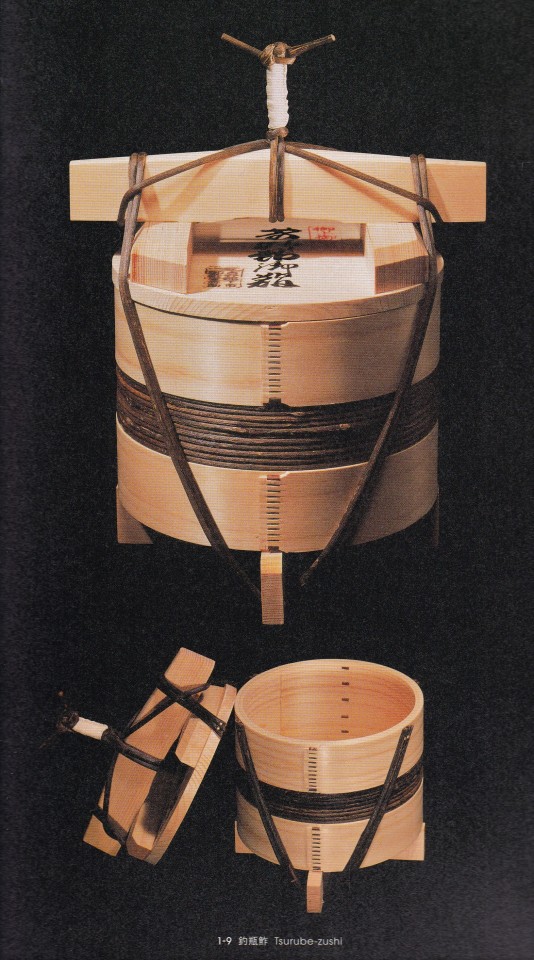

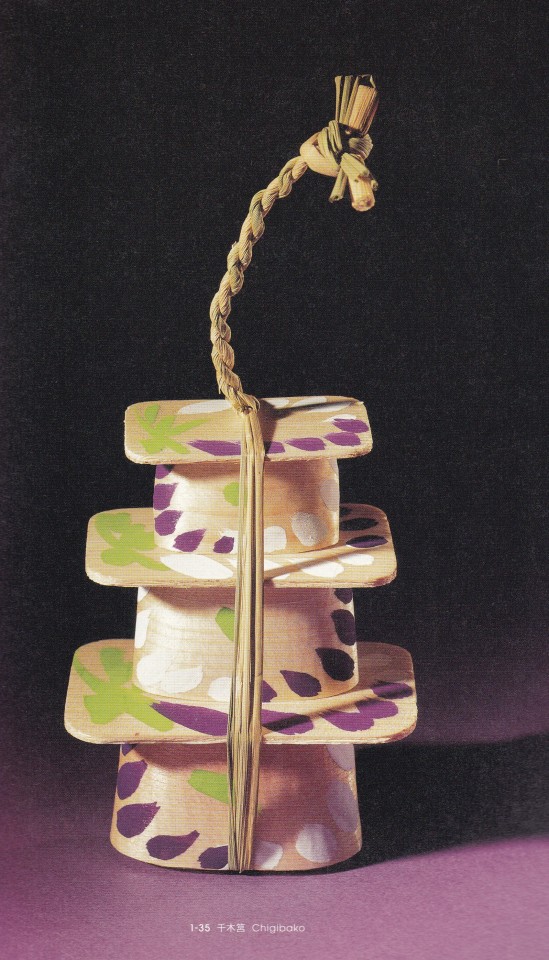

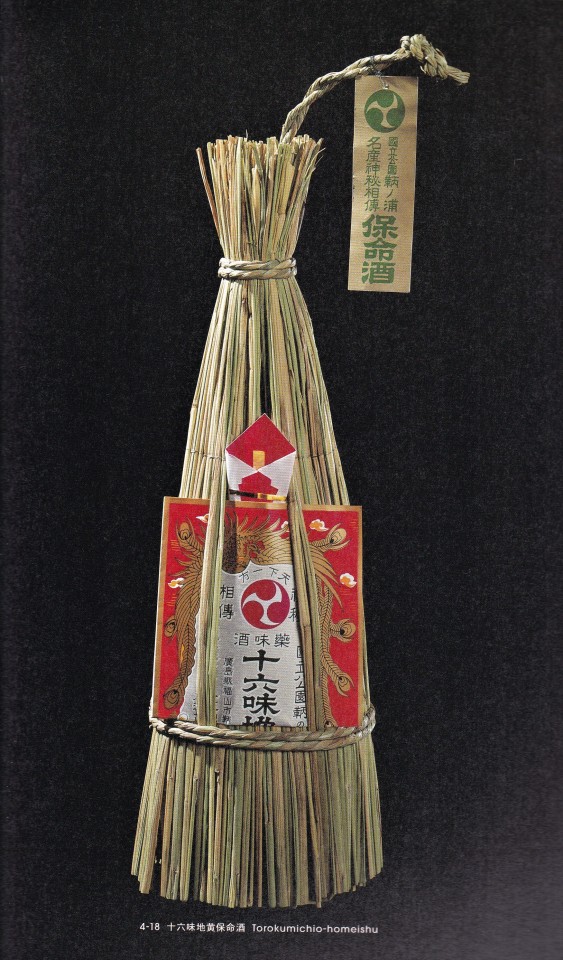
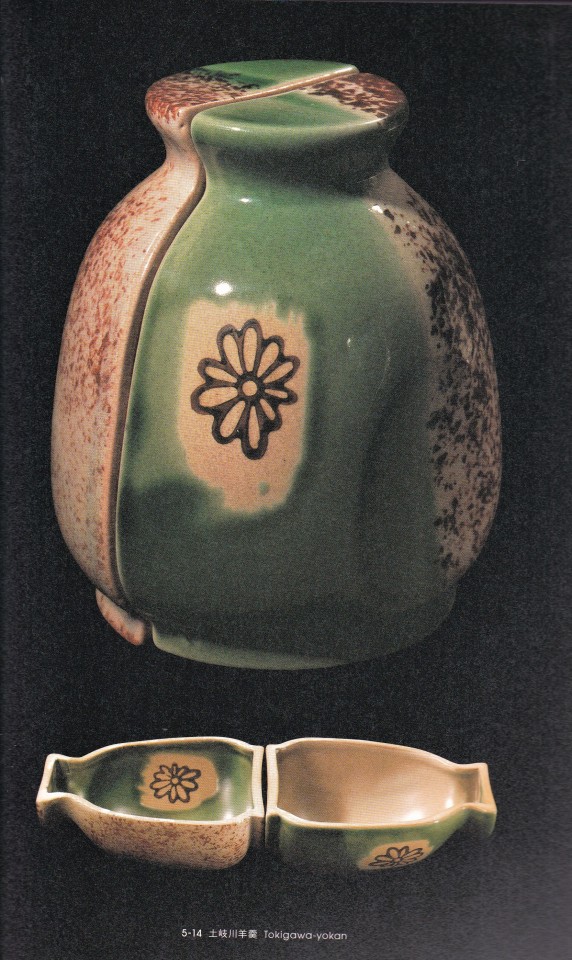



Tsutsumu : The Origin of Japanese Packaging
Hideyuki Oka
Concent, Tokyo 2019, 223 pages, Japanese, 19 x 27 cm,ISBN 9784909290014
euro 62,00
orders to: [email protected]
Hideyuki Oka (1905-1995), a pioneer of Japanese art directors and graphic designers, used traditional Japanese packaging made of natural materials such as wooden boxes, paper wraps, bamboo baskets, and straw wraps because of his profession. Fascinated by its beautiful shape, it was collected all over the country. He gradually became interested in the act of “wrapping” itself, and began to see what resided there as the peculiar “aesthetic consciousness” that the Japanese culture had nurtured.
Hideyuki Oka produced a book about traditional packages under his own art direction. He has gained a great reputation overseas, and exhibitions on this theme have traveled around the world and have been held at 100 locations in 28 countries. This book is based on the “Package” published by The Mainichi Newspapers in 1972, and is a pictorial record of the 2011 “Wrap: Japanese Traditional Package” exhibition (published by Meguro Museum of Art, BNN Shinsha). This is a newly re-edited version of “Hideyuki Oka” by Ichiro Saga (Tama Art University), a design historian.
orders to: [email protected]
twitter: @fashionbooksmi
flickr: fashionbooksmilano
instagram: fashionbooksmilano
tumblr: fashionbooksmilano
19/02/23
20 notes
·
View notes
Text
No zero days 08/365 - Weekly review
This weekly review encompasses eight days and is inspired by @mainichi-nihongoal's first "weekly report" 📝
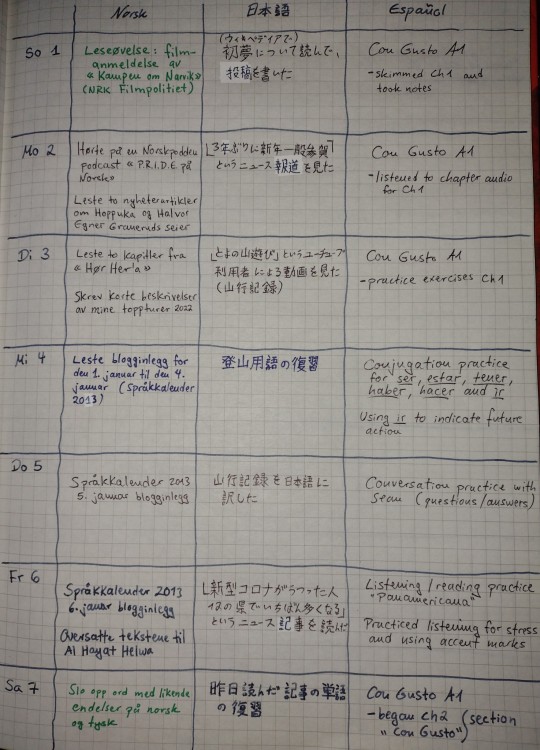
Some thoughts
I joined @chenopodiumlang's No Zero Days Langblr challenge (thank you for the Excel template!). It has been interesting because up until now, I've never really tracked time spent on my language learning or bothered to write down exactly what I'm doing. Now I'm trying out a bunch of different learning methods/activities and actively thinking about which ones I want to keep and further integrate into my day.
I'm going to try to designate Sundays as my "review" day but record my audio on Mondays, because I want to be home alone when I'm talking to myself 😂
Switching between three languages in one day has been challenging, because I need to focus on different things. With Norwegian it's vocabulary, with Japanese it's grammar and kanji, and with Spanish it's everything... 🤖
Norwegian

Listening to Norskpodden and reading Hør Her'a have reminded me once again that I have to let go and not fuss over words or chunks that I don't understand within a sentence, as long as I get the overall gist or meaning of what's being conveyed. Today, when I read the third chapter of Hør Her'a, I just underlined words I didn't know, took a guess and KEPT READING, and I surprised myself at how quickly I finished the chapter.
I'm having fun with the Språkkalender 2013 😃
My goal for next week is to watch a Norwegian movie or start a Norwegian series on Netflix.
Japanese

This week, I mainly read articles and watched videos, but also translated something I'd written in Norwegian - it took ages 🙈 Which reminded me that I need to work on my writing (also my handwriting). Is good old fashioned daily journaling the answer?
I will start watching Alice in Borderland in the coming days.
Spanish

Ughh verb conjugation 😩 Let's just say there's a reason I have never really gotten into Romance languages...
I'm on track to complete the first three chapters of Con Gusto A1 before my Spanish class begins on the 17th. Today I started the second half of Chapter 2, which I'll try to finish tomorrow.
8 notes
·
View notes
Text
Sometimes its easier to make small disruptions the biggest problems in your life
After exploring the form of cartons I thought it could be interesting to explore the title idea quite literally. I began by doing some rough sketches and explored some ideas to create a 7ft. tall carton of milk. Mike Canning pointed out that f you look at the side of the bottle it looks like and home and how from a design point of view (accidental or not) it can sublimely influence the consumer to buy the product as it can promote a feeling of homeliness and comfort. I went to by a carton in "Seans Shop" and realised the building looked like a bottle of milk! Everywhere I look now I feel as if I am surrounded by these giant bottles of milk and I found this project a bit overwhelming throughout the process but I suppose that's the point of making it so big.


Zooming into the shape makes it look less like a cute little corner shop and more like a giant daunting bottle of milk.

I did a little digging into the cartons shape and found and article of this family-owned milk shop in Japan which has been providing mainichi gyunyu (daily milk) to the residents of the rural town for nearly four decades. I thought it was very fun and lovely.
0 notes
Text
Angel Beats! (2010)

Angel Beats!
Aired: April 2010 to June 2010
Watched: No record to December 1, 2018
Producers: Aniplex, Dentsu, Mainichi Broadcasting System, CBC Television, Movic, Visual Arts, ASCII Media Works
Studio: P.A. Works
Number of episodes: 13
Synopsis:
Death is one of many mysteries that has left humanity in the dark since the dawn of time. However, the burning question of what happens to the soul after one dies is soon answered to 17-year-old Yuzuru Otonashi. Waking up with no previous memories in a dimension between life and death, he discovers the unsettling truth of the afterlife.
Taking the form of a high school, this bizarre dimension is designated to shelter those who died unwanted deaths. Feeling wronged by God during their earthly lives, the school's residents have decided to form the Afterlife Battlefront—a rebellious faction determined to oppose their god-like student council president, Kanade "Angel" Tachibana. The group's leader, Yuri Nakamura, recruits Otonashi in their fight against Angel in order to take control of their own lives. However, questioning the morality behind their actions, Otonashi takes a step behind the enemy lines to understand the opposing side of their common fate.

Notable characters:






Otonashi Yuzuru (voiced by Kamiya Hiroshi)
Nakamura Yuri (voiced by Sakurai Harumi)
Tachibana Kanade (voiced by Hanazawa Kana)
Hinata Hideki (voiced by Kimura Ryouhei)
Naoi Ayato (voiced by Ogata Megumi)
Yui (voiced by Kitamura Eri)

Rating/s:

Notes/comments (optional):
Can't remember the specifics.
Will I rewatch? Unlikely, but not impossible.

Source:
MyAnimeList
0 notes
Text

A Google Street View image as of June 2015 shows a local facility of the Unification Church in Konan, Aichi Prefecture, with a sign reading "Children's emergency shelter" put up at its entrance.
KONAN, Aichi -- A sign advertising a Unification Church facility in this central Japan city as a place for children to take shelter in emergencies has been removed after authorities said they had no knowledge of it.
The regional facility affiliated with the religious group, formally known as the Family Federation for World Peace and Unification, displayed the name of a local police station along with the sign reading "Kodomo 110-ban no Ie" (Children's 110 house). "110" is the emergency number to call police in Japan. The plate was removed by a city education board official who visited the church on Sept. 30, after an inquiry by the Mainichi.
The children's emergency shelter system is adopted across Japan, and in Aichi Prefecture, police stations entrust houses, shops and other places near schools to serve as shelters to allow for children to ask for help when they feel in danger. Those facilities are supposed to protect children and contact police. In the city of Konan, those willing to register as shelters apply to local elementary schools, which then examine the applicants and contact police, before police commission the applicants as shelters, according to the city.
The sign in question was attached to the inside of the local church's front entrance, making it visible from the outside through the glass. In addition to the words "Children's 110 house" and "Konan Police Station," the sign also bore the name of the school district where a nearby elementary school is located.
When the Mainichi Shimbun queried officials of the municipal government and board of education on Sept. 29, they each replied, "We weren't aware of the sign."

A "Children's emergency shelter" sign is seen at the entrance of the Unification Church's local facility in Konan, Aichi Prefecture, on Sept. 29. 2022. (Mainichi/Shinichiro Kawase, image partially modified)
When the Mainichi interviewed the nearby elementary school, its principal said, "It's my seventh year here at this school, but I didn't know about the sign. I don't think our school asked for it to be put up." While the school has checked signs along children's commuting routes every year, it was apparently unaware of the sign because the church is not located in a school zone.
An elderly local resident told the Mainichi, "A company that was previously housed in the same building had displayed the same sign." He added, "It would be strange if the church had applied for it and gotten accepted. By putting up the 'Children's 110 house' sign, it appears as if the church has gained trust from local residents and built good relations with them."
The Mainichi Shimbun went further to check since when the sign had been in place by using Google's Street View functions.
As of 2012, the building currently used by the church was housing a printing company. A plate of the same design was seen stuck on the entrance's glass panel. In a 2015 image, the building already housed the church, with the plate in the same place.
Based on these images, the city education board also concluded that the plate distributed to the previous tenant had remained there. As the church keeping the sign deviates from the purpose of the "Children's 110 houses" which are mainly located along school commuting roads, the education board asked the church to remove it.
"We wanted them to consult with the city instead of displaying the sign without permission," a representative of the education board commented, adding, "We would have wanted the previous tenant to return the plate."
A senior official at the Konan Police Station testified they had never heard of the sign at the church before. "We are looking into why the name of this police station was used (in the sign)." As Aichi Prefectural Police normally provide plates bearing the illustration of the police force's mascot when they commission private facilities as children's temporary shelters, the official speculated that the sign at the church may have been provided by the local community or the city government.
"This sign had long been here. We have no idea about the background as the current person in charge was assigned here several years ago," said a representative of the church.
Eito Suzuki, a journalist who has covered Unification Church issues, pointed out, "It can be thought that the church took advantage of the sign to make it appear as if police and the community had given it a stamp of approval. It's typical of something the church would do."
0 notes
Text
instagram
#digital notebook#design#digital planner#digital#digital notes#digital journaling#digital stickers#digital planning#student planner#Mainichi#Mainichi designs#books & libraries#Instagram
5 notes
·
View notes
Photo









Ikura Takashi was born in Gifu in 1962 and graduated from the Tajimi City Ceramic Design Research Institute in 1989. His first solo exhibition was held in 2004, the same year in which his work was first accepted for the Mainichi Newspaper's triennial Japan Ceramic Art Exhibition (also in 2007 and 2010).
Ikura's works are thrown as single, thick-walled vessels and then meticulously pared down with knives and planes, and then, after bisque-firing, polished smooth with abrasive paper. Their appearance is industrial and yet they have been made by the most painstaking of hand-crafting methods.
https://collections.vam.ac.uk/.../where-shadow-meets.../
16 notes
·
View notes
Text
Reviewing Chrome New Tab Vocab Extensions
I thought it would be fun to install a browser extension to show me vocab when I open a new tab. I found 5 of these extensions that support Chinese. I tried them all out to decide which I liked best, so I thought I’d write up this little review. If you know of any other extensions, I’ve love to hear about them!

1) Accumulate:
First of all, the pictures are beautiful. This service only displays single characters, not words. You can choose to display characters based on frequency or HSK level. I really like how it shows the same character all day and how the definitions are more than just one word. Also, you can display traditional and simplified together. You get to choose which one is bigger, and the other one will be shown underneath. There’s also a lot of flexibility in the settings. As you can see, you can even add Cantonese and Japanese pronunciation! The settings menu is pictured below:

And a tip for this extension: if you already know the character of the day, switch to another vocab list and then back to your original one. Then it will switch to a different character for the rest of the day.

2) Hanzi Xiaobai:
This service animates stroke order, which is pretty cool. It also allows you to select words by HSK level and also only shows single characters instead of words. There’s a new character every time you open a new tab. It appears to only support simplified characters. As you can see, it’s not quite as pretty as the first extension. Also, it can take a sec for the stroke order animation to load.

3) Letra:
This extension supports full words. It will show you the same word all day, but you can press the refresh button if you want a new word. Also, this service has a variety of different languages. Simplified and traditional are supported separately, so you can’t see both at once. For me, the deal breaker was that I couldn’t choose a level. I kept getting words I knew already and didn’t really want to have to deal with refreshing until I got a novel word. Also, the definitions are typically just one word, which isn’t enough nuance for me.

4) Mainichi:
This service shows a new word each time you open a new tab. It also supports Japanese and Korean, but I didn’t test those. It only supports simplified characters. Also, I noticed it has a lot of household item and animal nouns, which aren’t really what I’d like to be learning right now. The images match the word, which is nice, but the overall appearance is pretty plain compared to some of the other options.

5) Ponddy:
This service offers a lot of customizability for level of words. I’ve put a screenshot of the settings menus below. However, I believe you have to make an account to use some of the features. The biggest downside for me was that this service actually makes a “deck” of flashcards, so you are supposed to go and click through them. I wanted something more simple. Also, I just found that this service looks too busy.

I eventually went with 1) Accumulate. Even though I would prefer words over characters, I decided that good definitions, simultaneous simplified and traditional characters, and a simple design were more important to me. Also, I decided having the same character/word all day is probably better than a new one every time I open a new tab. The pretty pictures don’t hurt, either.
#chinese resources#chrome extensions#browser extension#chinese#mandarin#mandarin chinese#chinese language#zhongwen#hanyu#langblr#studyblr#chinese studyblr#mandarin studyblr#chinese langblr#mandarin langblr#language learning#learn a language#learning a language#learning languages#study chinese#study mandarin#learn chinese#learn mandarin#studying chinese#studying mandarin#learning chinese#learning mandarin#language blog#language study#language stuff
70 notes
·
View notes
Text
Blue Period Paints Real-Life Manhole Covers Around Tokyo University of the Arts
Blue Period is the story of one kid who is doing his best to make it into the Tokyo University of the Arts, being inspired by those before him and the girl he has a creative crush on. To help inspire others on their Geidai journey, the series has installed two manhole covers in late March close to the Department of Painting of the university near the back gate.
The two covers, which feature Yatora Yaguchi on one cover and Ryuji "Yuka" Ayukawa on the other, had their designs released by Taito Ward.
Not only is Tokyo University of the Arts close to the series as the main goal of Yaguchi, but it is also the university where series creator Tsubasa Yamaguchi graduated from, bringing Blue Period back to the real-life campus.
Taito Ward, the administrative council of the area of Ueno where Tokyo University of the Arts is situated, is looking at making the area a new anime pilgrimage site, much like how Asakusa (which is also in Taito Ward) is a pilgrimage site for Sarazanmei. The council is hoping this will drive up local tourism after the pandemic lowered the number of people visiting Ueno Park and its surrounding attractions.
RELATED: Blue Period TV Anime Paints a 2nd Trailer That Previews the Opening Theme Tune
The Blue Period manga has been serialized in Kodansha's Monthly Afternoon since June 2017, with its English language edition having been published by Kodansha USA since October 2020. Here's the official synopsis:
Yatora is the perfect high school student, with good grades and lots of friends. It’s an effortless performance, and, ultimately…a dull one. But he wanders into the art room one day, and a lone painting captures his eye, awakening him to a kind of beauty he never knew. Compelled and consumed, he dives in headfirst — and he’s about to learn how savage and unforgiving art can be!
The anime adaptation of Blue Period aired between October 2, 2021, and December 18, 2021, with Netflix streaming the series worldwide after a few weeks.
Source: Mainichi Shimbun
----
Daryl Harding is a Japan Correspondent for Crunchyroll News. He also runs a YouTube channel about Japan stuff called TheDoctorDazza, tweets at @DoctorDazza, and posts photos of his travels on Instagram.
By: Daryl Harding
2 notes
·
View notes
Text
So much to watch, not enough time in the week - What does Fall 2020 look like?
A list of what looks interesting in the next season and silly reasons as to why

I’m not the sort of person who likes finding out too many (in some cases even a smidgen of) details about anime I’m going to watch, so this will be a spoiler free preview of the season. Here is a list of anime I will try and you can expect to hear about on Kagemajaya.
Click on the show names to be taken to their MAL pages for more detail.
Hype
Taisou Zamurai
A male cast gymnastics anime from MAPPA (the studio of Yuri!!! on Ice.) Enough said.
Watch the trailer here.

Chuan Shu Zijiu Zhinan
This one’s a bit of a cheat as we’ve already seen 2 episodes of it (3 for those who have VIP accounts on weTV.) However, I was indeed hype for it before it started. Based on a BL novel by Mo Xiang Tong Xiu, the author of Mo Dao Zu Shi, this one promises a lot to people who enjoy transmigration, cultivation and a bit of gay. It is also a quite funny isekai parody. The only downside is that it doesn’t share the same visual quality as MDZS, and is entirely 3D. It’s a good thing I’m not much of a stickler for hot visuals.
Watch it here on its official stream.

Tian Guan Ci Fu
Another donghua based on a BL novel, well-known among the danmei fans also by its English name of Heaven Official’s Blessing. Also written by Mo Xiang Tong Xiu (boy, are they busy.) And a big plus: it’s not 3D, so really looking forward to watching handsome men cultivate together in pseudo-historic China. Beautiful setting, beautiful boys. Now one can only hope for an interesting plot too and we are set.
Watch the trailer here.
Cautiously Expectant

Yuukoku no Moriarty
I saw manga adverts for this one all around Akihabara and Ikebukuro last year when I went on a little trip to Japan. The bishie Professor Moriarty was an immediate pull, and as a Holmes fan, I feel attracted to most of its adaptations, despite almost always being let down. The one thing that makes me cautious about this one is that it is published by a shounen magazine that is not GFantasy, so I’m not sure if the bishie designs and the male cast actually mean what I want it to mean. Fingers crossed.
Watch the trailer here.
Giving It a Shot
Inu to Neko Docchi mo Katteru to Mainichi Tanoshii
A cute looking comedy short about a dog and a cat.

Jujutsu Kaisen
A mostly male cast Shounen Jump affair. Spring 2020’s Kakushigoto also implied that it has a fujoshi fanbase - let’s see what that’s all about.
Maesetsu!
A female cast gag comedy sol created by Lucky Star’s Yoshimizu Kagami. I watched Lucky Star fairly recently and found it quite entertaining with many sweet/funny characters. I suppose we will see if Yoshimizu still has it. Fingers crossed.
Adachi to Shimamura
I try to watch all queer anime as they come, and this comes in from the shoujo ai quota. Looks like a pretty straightforward romance. Hopefully it will have heart.
Kaeru no Pickles: Kimochi no Iro
All I know about this one is that it has a chill looking poster and has a slice of life tag on MAL. I’m not entirely sure whether we’ll get this subbed, but if we do, I’ll give it a shot.
Kami-tachi ni Hirowareta Otoko
Fell for the slice of life tag once again. This one is an isekai with a soft looking MC. Not entirely sure it’ll be up my alley, but no harm in trying it, maybe for a pleasant surprise.
Sore dake ga Neck
This one seems to have the cool setting of a convenience store. I did initially think this was going to be a sol as well, but seems like that might not be the case. Either way, cool setting.
Hypnosis Mic: Division Rap Battle - Rhyme Anima
Another anime whose source project I saw plastered all around Tokyo. I’m not a huge fan of idol shows but the rapping bit makes me a bit curious.
Noblesse
A manhwa massively popular among female fans which has also received one off adaptations before, it’s finally getting its turn for a full cour among the hype the industry seems to have for Korean webtoons these days (Kami no Tou, God of High School, etc.) I did watch one of the OVA’s years ago, and wasn’t entirely impressed but then again I can’t judge a whole work based on one arc adapted into a single episode. Male cast action stuff. We shall see and judge.
Magatsu Wahrheit: Zuerst
This was chosen entirely on my shallow criteria as usual: visuals with two dudes on them. Now we’ll see whether the German name is a cringe factor or it’s actually interesting.
Sequels
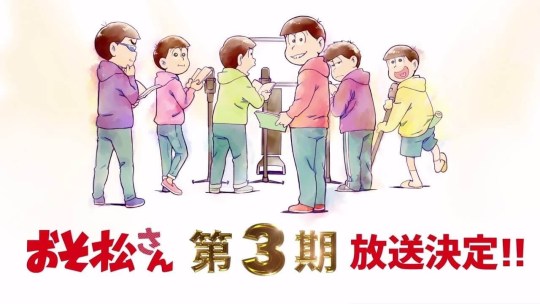
Osomatsu-san 3rd Season
Osomatsu-san has been a consistently high quality production for me since the beginning. The humor is definitely my cup of tea, though as with any episodic gag comedy, some sketches do miss. It is more often than not a hit. The seiyuu cast is a huge huge pull, as this is not them only acting out an already written character but you can actually hear them having fun as the sextuplets. It is also one of the rarer shows where I, as a person who isn’t great at focusing on visuals, appreciate the impeccable quality of animation. So hype for another season of this majorly fun series and to welcome Matsuno’s back home - coziness, here I come.
Quanzhi Gaoshou 2
I watched the first season of Quanzhi Gaoshou (or King’s Avatar) because it was made by the studio of MDZS, and it was the first time I had seen a good looking Chinese animation production. And it didn’t disappoint. Production quality was similar and more importantly, it had a very engaging plot - pro MMORPG players playing MMORPG, their personal dramas and the actual (surprisingly fun for me) gameplay and action. Its most important quality is still its charming cast for me, a successful ensemble cast, where with the exception of the antagonists, everyone and their relationships are lovely. Mostly a male cast show, it does also have nice ladies. Looking forward to going back to them. My only personal issue (definitely not a flaw on the show’s part but my attention span) is that it has so many teams and characters that I forgot most of who was who. Fingers crossed it’ll be easy to get back into.
Haikyuu!!: To the Top 2nd Season
Haikyuu is back again, to finish off the “To the Top” arc. The first cour of this season was probably the season that took me out of the Haikyuu hypnosis state where I assumed everything that came out with the name attached to it was great. It was still enjoyable in its second half but I do feel like the magic has worn off now. I hope I’m wrong and the tournament hype will bring it back again. Haikyuu is at its best when it’s tense in-match and funny with character interactions, so fingers crossed for that.
Ani ni Tsukeru Kusuri wa Nai! 4
The Chinese comedy short is back! As mentioned a couple of paragraphs ago, gag comedies are always hit or miss with their sketches, and this one is also mostly a hit for me, though definitely not at the level of Osomatsu-san. The pull of this show is the cute boys and their dumbassery. Looking forward to its easy fun and more Kai Xin.
Also continuing...

Mo Dao Zu Shi Q, Great Pretender
Have been enjoying both these shows greatly so far. 2 more cours of MDZS Q to go with their cute chibi fun, and Great Pretender’s last case (9 eps) is already released on Japanese Netflix so now we wait for Laurent and the gang to reach us. Really looking forward to the emotional drama of Laurent and hopefully some proper addressal of his feelings for Edamame. Either way, it’ll look gorgeous and will be heaps of fun if the first three cases are anything to go by.
I might pick up other shows and most likely drop some of these throughout the season but here’s hoping it will be enjoyable overall despite the small number of shows I’ll start with. What are you guys planning to watch?
#anime#anime rec#seasonal anime#fall 2020#taisou zamurai#scumbag system#scumbag villain#heavens official blessing#tgcf#yuukoku no moriarty#mo dao zu shi#mdzs#great pretender#osomatsu season 3#osomatsu-san#haikyuu#quanzhi gaoshou#kings avatar#inu to neko docchimo katteru to mainichi tanoshii#jujutsu kaisen#maesetsu#maesetsu!#adachi to shimamura#kaeru no pickles#kamitachi ni hirowareta otoko#sore dake ga neck#hypmic#noblesse#magatsu wahrheit#ani ni tsukeru kusuri wa nai
26 notes
·
View notes
Photo










Clothes by Yoshiki Hishinuma
edited by Yoshiki Hishinuma, book designed by Toshine Ishinama and Yoshiki Hishinuma, text by Pierre Restany
Yobisha Co., Tokyo 1986, 203 pages, 31x31 cm., ISBN 978-4946419355
euro 360,00
email if you want to buy :[email protected]
Yoshiki Hishinuma is known for producing uniquely shaped clothes using wind and air, as well as integrating technology into traditional Japanese tie-dye designs.
Born in 1958, Sendai City, Japan, Hishinuma studied at Bunka College of Fashion before working at Miyake Design Studio. He then became a freelance designer, specialising in theatre and stage costumes. In the 1980s he produced uniquely shaped clothes using wind and air, which he called Kite Clothes and Air Clothes. He designed many other costumes with highly original shapes. In 1987, he opened a studio and in 1992 began designing under his own name and he also began showing his collection in Paris.
When Hishinuma was unable to procure textiles that were to his liking, he began experimenting with natural and chemical processes to alter the finish and form of synthetic fabrics. In 1996, he was awarded the Mainichi Prize for Fashion. An exhibition of his works designed over the previous ten years was held in 1999 at the Gemeentemuseum Den Haag in the Netherlands.
24/03/22
orders to: [email protected]
ordini a: [email protected]
twitter:@fashionbooksmi
instagram: fashionbooksmilano, designbooksmilano tumblr: fashionbooksmilano, designbooksmilano
#Yoshiki Hishinuma#Hishinuma#Japanese tie-dye designs#Japanese fashion#rare books#fashion books#fashionbooksmilano
31 notes
·
View notes
Link
NAHA, Japan (Kyodo) -- Defense Minister Nobuo Kishi and Okinawa Gov. Denny Tamaki remained at odds during their meeting Thursday over the issue of a key U.S. military base relocation within the southern island prefecture.
Tamaki reiterated his opposition to the controversial transfer plan for U.S. Marine Corps Air Station Futenma, located in a residential area of Ginowan, to the less populated coastal area of Henoko in Nago in line with Japan's agreement with the United States, demanding that it be relocated out of the prefecture.
Kishi visited Okinawa for the first time since assuming the post of defense minister last month.
Kishi told Tamaki that the government's position on the issue is unchanged, saying that the relocation to Henoko is "the only solution from the perspective of maintaining the deterrence of the Japan-U.S. alliance and addressing the dangers (of having the base) in Futenma."
"Making steady progress with relocation work should lead to an early return of the land in Futenma" occupied by the base, he added.
Tamaki said the central government should listen to Okinawa residents who want the facility out of the prefecture and "stop its landfill work (in Henoko) at once," while handing to Kishi a written request calling for the early resumption of meetings between officials of the central government and Ginowan aimed at realizing an early return of the land for the Futenma base.
Speaking to reporters after the meeting, Kishi said the government will consider resuming the talks.
Okinawa accounts for about 70 percent of the total acreage exclusively used by U.S. military facilities in Japan despite the prefecture only representing 0.6 percent of the country's land.
Prior to the talks at the prefectural government office, Kishi inspected the progress of the construction work in Nago.
In April, the local bureau of the Defense Ministry asked the prefecture for a permit for an alteration to the base design after concluding that ground improvement work is needed along the coastline of Henoko. But, the Okinawa government is expected to reject the request.
Kishi's two-day trip to the island prefecture through Thursday came as Chinese government vessels are stepping up activities in waters around the uninhabited Senkaku Islands in Okinawa at the heart of a territorial dispute with China.
China claims the Japan-controlled islets about 400 kilometers west of Naha in the East China Sea and calls them Diaoyu.
#Denny Tamaki#Kyodo#Japan#Politics#Japanese Imperialism#Okinawa#Henoko#Futenma#玉城 デニー#Mainichi Shimbun
6 notes
·
View notes
Text
Uma família de maçãs cantantes
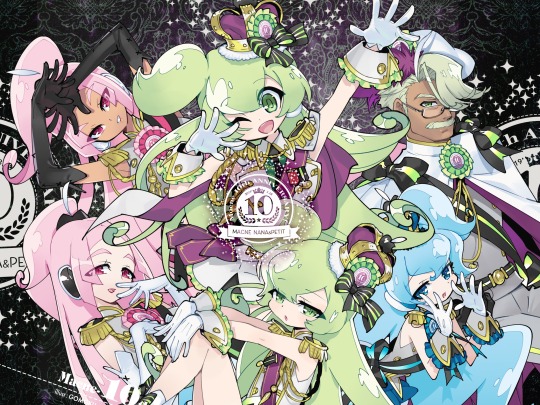
Imagem por: Gomoku Akatsuki
ㅤㅤ
ㅤㅤMesmo tendo uma voz bela, fofa e de boa qualidade, Macne Nana não é uma das Vocaloids mais memoráveis que há no mercado, contendo poucos trabalhos e até sendo esquecida por muitas pessoas da comunidade de VOCALOID. Por causa disso, não são todos que conhecem a sua história: como surgiu, quem teve a ideia de criá-la, quem são os outros personagens que a acompanham, entre outros. Por incrível que pareça, sua origem vem bem antes de seu banco de voz para o VOCALOID3, em uma época a qual ainda não se cogitava muito levar o sintetizador da Yamaha para outras plataformas.
ㅤㅤ
ㅤㅤTudo começou ainda na era VOCALOID2, algum tempo após o lançamento de Hatsune Miku. A fama da personagem influenciou diversos lançamentos dentro e fora do universo de VOCALOID através de sua aparência, voz e conceito futurístico puxados para um estilo mais anime, e o caso deste texto não foi diferente. Naquela época, o sintetizador de voz ainda não havia recebido uma versão para o sistema operacional da Apple, o macOS, e poucas alternativas para produção musical estavam disponíveis para ele. Portanto, em 2008, uma colunista da revista japonesa Mac Fan, publicada pela editora Mainichi Communications, chamada Haruna Ikezawa apresentou sua ideia na coluna “Voz Angelical de Haruna Ikezawa (池澤春菜の天声姫語; Ikezawa Haruna no Tensei Himego)”, a qual ela escrevia regularmente: criar um banco de voz para canto semelhante ao da Miku, mas que funcione nos computadores Macintosh. O projeto, referido como “Macne Miku (Mac音ミク)” no começo, foi amadurecendo com o tempo e um protótipo chegou a ser exibido em um seminário realizado pela empresa japonesa MI7 Japan, até que Macne Nana, apelidada de a “princesa do som” para Macintosh, foi lançada comercialmente no final de março do ano seguinte, dando início à série Macne (Mac音シリーズ).
ㅤㅤA princípio, o conjunto de voicebanks foi projetado para serem usados nos DAWs GarageBand e Reason, porém apenas o original de Nana é capaz de operar em ambos; como padrão, todos funcionam no primeiro citado, e a partir do terceiro produto, Macne Coco, passaram a ser compatíveis com o utilitário complementar Apple Loops Utility, possibilitando seu uso junto com outros softwares da Apple, como Soundtrack Pro e Logic Pro. Por serem feitos para um programa focado em síntese de instrumentos musicais, o manuseio dos Macloids é considerado difícil e os resultados obtidos são extremamente robóticos e inumanos, mas, ainda sim, eram considerados uma das melhores opções para produtores musicais e usuários japoneses de Mac naquela época, pois não haviam softwares como VOCALOID para ele ainda. Apesar da recepção positiva, a série Macne ficou mais popular graças à sua licença open source que permitiu sua importação para o UTAU após alguns usuários descobrirem métodos para isto, trazendo um público maior, porém mais amador. Com isso, além do suporte dos desenvolvedores, três voicebanks para o sintetizador (Macne Nana 2S, Macne Petit 2S e Whisper☆Angel Sasayaki) foram produzidos e, assim como os demais Macloids, vendidos à um preço bem inferior ao de um Vocaloid, algo incomum dentro do ambiente do UTAU onde os bancos são produzidos por pessoas comuns e distribuídos gratuitamente.
ㅤ
youtube
↪ Cover da música Ievan Polkka usando os bancos mais recentes da série Macne, lançados antes de Nana tornar-se uma Vocaloid.
ㅤ
ㅤㅤAté que, no dia 24 julho de 2013, a versão para Mac do VOCALOID3, entitulada VOCALOID NEO, foi anunciada que chegaria ao mercado no começo do próximo mês. No entanto, apesar da novidade ser agradável e interessante, Haruna teve muitos problemas nesta jornada para conseguir transformar Macne Nana em uma Vocaloid, sendo o primeiro deles a falta de dinheiro para orçar a produção de um voicebank. Além disso, um acordo teve de ser feito com a Yamaha: quando estivesse 70% concluído, o banco passaria por uma revisão e, caso o resultado fosse satisfatório, seria vendido como um produto exclusivo da antiga VOCALOID STORE, o que significa que os produtos antigos da série Macne deveriam ficar indisponíveis para compra e os planejados, cancelados. Após a aprovação da empresa e obtenção de um patrocinador, ainda houve a questão dos atrasos, pois as gravações tiveram que ser refeitas várias vezes para melhorar sua qualidade e a criadora insistiu em fazer um banco inglês também, sobrando, respectivamente, pouco tempo para cuidar da edição delas e retardando o projeto em mais um ano e meio. Apesar dos contratempos, o voicebank bilíngue de Nana para o VOCALOID3 foi lançado, e tinha como objetivo deixar seu tom mais próximo com a de suas origens, o que fez muitos usuários de UTAU que a conheceram pelas versões importadas manualmente por fãs o estranharem devido à estas deixarem sua voz mais grossa; mais tarde, foi atualizado para o VOCALOID4, apresentando, além de uma melhoria na qualidade, o vocal da irmã mais nova da personagem.
ㅤㅤNo total, a série Macne teve nove voicebanks desenvolvidos pela MI7 Japan e distribuídos pela act2, e a família é composta por cinco membros: Macne Nana, Macne Petit, Macne Papa e as gêmeas Macne Coco White e Black. Seus designs, feitos por Haruna e pela ilustradora Gomoku Akatsuki, remetem aos produtos da Apple, principalmente aos computadores da linha Macintosh por terem sido desenvolvidos para serem usados no sistema operacional da máquina. Nota-se que muitas das informações citadas abaixo, e em páginas da internet relacionadas aos personagens, foram retiradas do livreto de três volumes Macne:Bon (マクネボン), lançado entre 2009 e 2011 e, infelizmente, apenas disponível em japonês e vendido por revendedores.
ㅤㅤ
Macne Nana

• Nome: Mac音ナナ (Makune Nana)
• Datas de lançamento: 28 de março de 2009 (GarageBand/Reason)
ㅤㅤㅤㅤㅤㅤㅤㅤㅤㅤㅤ 29 de março de 2012 (2S)
ㅤㅤㅤㅤㅤㅤㅤㅤㅤㅤㅤ 31 de janeiro de 2014 (VOCALOID3)
ㅤㅤㅤㅤㅤㅤㅤㅤㅤㅤㅤ 15 de dezembro de 2016 (VOCALOID4)
• Provedor de voz: Haruna Ikezawa
• Ilustrador: Gomoku Akatsuki
• Exemplos de uso: Kokoro (GarageBand), Antenna (Reason), Mr. Blue ~My Earth~ (UTAU), Meltdown (UTAU(S2)), Tsukema Tsukeru (VOCALOID3(JPN)), FATE (VOCALOID3(ENG)), Plastic Love (VOCALOID4(JPN)) e Not Fair (VOCALOID4(ENG))
Macne Nana foi, junto de sua irmã mais nova Petit, uma das primeiras personagens da série Macne a ser lançada, sendo a mais popular e usada como garota propaganda da família. É descrita como uma garota animada, otimista e um pouco desajeitada que sempre procura ver o lado positivos das coisas, mesmo se envolvendo em acidentes e chegando atrasada para o trabalho na cafeteria Macne Cafe, a qual ela e suas irmãs administram. Inicialmente, por ser inspirada em Hatsune Miku, era chamada de “Macne Miku (Mac音ミク)”, porém o nome foi descartado após o projeto tornar-se algo mais sério e voltado para a comercialização.
Referida como a “princesa do som” para Macintosh, seu primeiro voicebank — o único da série desenvolvido originalmente para funcionar em ambos GarageBand e Reason — foi projetado com a intenção de soar de forma clara e animada, ao ponto de parecer fofo e infantil. Para comemorar seu terceiro aniversário, foi lançado o Macne Nana 2S (Mac音ナナ2S), uma nova versão de Nana com amostras regravadas, compatibilidade com o UTAU e voz um pouco mais suave e menos de criança que a original. Alguns anos depois, Nana foi lançada para o VOCALOID3 como um banco de voz bilíngue e, mais tarde, foi atualizada para o VOCALOID4, acrescentando Macne Petit; um fato interessante é que uma parte do dinheiro das vendas de seu banco VOCALOID3 foi doada para ajudar as vítimas do Grande Terremoto do Leste do Japão.
Macne Petit

• Nome: Mac音プチ (Makune Puchi)
• Datas de lançamento: 28 de março de 2009 (GarageBand)
ㅤㅤㅤㅤㅤㅤㅤㅤㅤㅤㅤ 29 de março de 2012 (2S)
ㅤㅤㅤㅤㅤㅤㅤㅤㅤㅤㅤ 15 de dezembro de 2016 (VOCALOID4)
• Provedor de voz: Haruna Ikezawa
• Ilustrador: Gomoku Akatsuki
• Exemplos de uso: Song of the Eared Robot (GarageBand), Alice (UTAU), null (UTAU(S2)) e Recovery (VOCALOID4)
Inicialmente conhecida como “Macne Nana Petit (Mac音ナナpetit)” e “Chibi Nana (ちびナナ)”, Macne Petit é o membro mais jovem da família Macne e, junto de Nana, um dos primeiros lançamentos da série. Geralmente quieta, é considerada a mais séria da casa, que se preocupa em manter todos da família unidos e prefere conversar com a pessoa ao invés de ver as coisas darem errado. Um fato curioso é que ela é capaz de adquirir outra forma, que será explicada mais adiante.
O nome “Petit” (”pequeno” em francês) foi escolhido, pois ela foi originalmente introduzida como uma versão menor e mais compacta de Nana, contendo 104 amostras de voz e sendo, portanto, a menor biblioteca de voz da série Macne. No entanto, graças ao crescimento de sua popularidade, a personagem tornou-se mais independente e recebeu o papel de “irmã mais nova”, passando a ser conhecida apenas como “Macne Petit” — apesar do banco VOCALOID4 de Nana referir-se a ela como “Macne Nana Petit” — e expandindo o conceito de “família” dos personagens. Além disso, para diferenciá-la de Nana ainda mais, Petit recebeu um novo voicebank, chamado Macne Petit 2S (Mac音プチ2S), com amostras únicas e mostrando que, na realidade, sua voz é bem mais delicada, porém arrojada, que a de sua irmã.
Macne Coco [White]
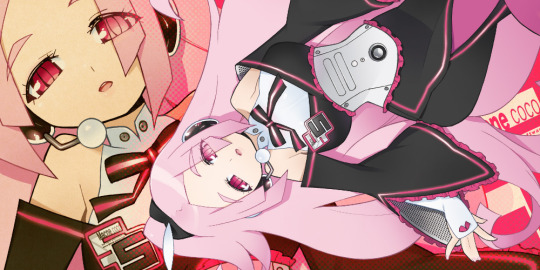
• Nome: Mac音ココ[白] (Makune Koko [Shiro])
• Data de lançamento: 30 de setembro de 2009
• Provedor de voz: Kikuko Inoue
• Ilustrador: Gomoku Akatsuki
• Exemplos de uso: The WanderLast (GarageBand), Ghost Rule (UTAU) e Coco Lullaby (?)
Macne Coco [White] é, junto de sua gêmea Coco Black, a irmã mais velha da família Macne. De personalidade amigável, calma e madura, é responsável por manter a casa funcionando e trabalha no Macne Cafe; apesar de estar sempre sorrindo, ninguém deseja saber como sua expressão de raiva é, então apenas sorriam de volta para ela. Uma curiosidade é que ela dorme com os olhos aberto, o que deixa sua irmã gêmea assustada.
Diferente de Nana, a voz de Coco White é mais suave e madura, sendo referida como “a voz da cura”. Inicialmente, seu produto chamava-se apenas “Macne Coco (Mac音ココ)”, só que isto foi alterado com o lançamento de Coco Black para diferenciar as personagens. Durante seu desenvolvimento, Kikuko Inoue, sua provedora de voz, se envolveu bastante na criação da personagem, escolhendo o nome, a idade, a cor dos cabelos e o penteado; inclusive, cogitou-se usar o nome “Momo”, mas Kikuko optou por escolher “Coco”.
Macne Coco [Black]
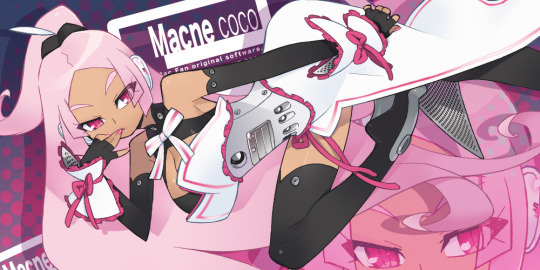
• Nome: Mac音ココ[黒] (Makune Koko [Kuro])
• Datas de lançamento: 6 de junho de 2010
ㅤㅤㅤㅤㅤㅤㅤㅤㅤㅤㅤ Fevereiro de 2011 (v2)
• Provedor de voz: Kikuko Inoue
• Ilustrador: Gomoku Akatsuki
• Exemplos de uso: Song of Arabia (Reason), música demo (GarageBand(v2)), Starduster (UTAU(v2)) e black chocolate (?)
Macne Coco [Black] é a irmã gêmea de Coco White e, junto dela, a mais velha da família Macne. Amante do gênero yuri, é uma garota extremamente emocional e, ao contrário de sua gêmea, incapaz de assumir responsabilidades maiores que, por exemplo, vender palitos de doce; também é considerada a rainha da ignorância entre os familiares e bem vaidosa, colocando sua aparência como prioridade máxima. Um fato curioso é, além de seu design ser originalmente baseado em uma garçonete e vários comprimentos de saia terem sido testados, a personagem foi mantida em segredo durante seu desenvolvimento para surpreender o público quando fosse lançada.
Apesar de ter sido lançada como um vocal variante de sua irmã gêmea, Coco Black possui uma figura própria para que, assim, possa-se diferenciar as duas. Sua voz foi projetada para dar-lhe um ar de “frieza” e, por isso, apresenta um tom mais alto e grave que o de Coco White. Um tempo depois, seu banco de voz foi tirado de mercado e substituído por um novo chamado Macne Coco [Black] v2 (Mac音ココ[黒]v2), que trouxe amostras de voz melhoradas e uma nova arte para a caixa do produto; este é o primeiro vocal da série Macne a ser retirado de venda para melhorias.
Macne Papa

• Nome: Mac音パパ (Makune Papa)
• Data de lançamento: 30 de abril de 2010
• Provedor de voz: Jouji Nakata
• Ilustrador: Gomoku Akatsuki
• Exemplos de uso: Tsuki no Sabaku (GarageBand), Song of Arabia (Reason) e LOVE10 (UTAU)
Como o próprio nome sugere, Macne Papa representa a figura paterna da família Macne, sendo o mais velho e único personagem masculino da série. Segundo seu perfil, é um homem por volta dos 40 anos maduro, calmo e cooperativo cuja profissão não é muito clara, mas raramente para em casa e tem como seu maior passa-tempo viajar pelo mundo; mensalmente, manda tesouros e peças que coleta de suas viagens para a residência, e adora carne. Haruna e Gomoku dizem ter tido dificuldades em fazer seu design por não saberem o que se encaixaria melhor com o personagem, levando a várias tentativas.
Com uma voz grave e mais madura que das gêmeas Coco, Papa, além de ser o único vocal masculino, é a maior biblioteca de voz da série Macne, contendo 118 amostras de voz no total. Um lançamento especial e limitado chamado Macne Papa [with limited benefits] (Mac音パパ【限定特典付き】) foi disponibilizado por seis dias, entre 30 de abril e 5 de maio de 2010, e apresenta, além do voicebank, várias amostras de fala gravada pelo provedor de voz.
Whisper☆Angel Sasayaki

• Nome: ウィスパー☆エンジェル ささやきさん (Wisupā☆Enjeru Sasayaki-san)
• Data de lançamento: 2 de dezembro de 2011
• Provedor de voz: Haruna Ikezawa
• Ilustrador: Gomoku Akatsuki
• Exemplos de uso: Deep Colors (GarageBand), Dolls (UTAU) e 明治神宮前〈原宿〉 -I’m the Whisper Angel- (?)
Diferente dos outros personagens, Whisper☆Angel Sasayaki — algumas vezes referida como "Macne Sasayaki", "Macne Sasa" ou "Macne Nana Whisper" pela comunidade de UTAU — não chega a ser um membro da família Macne, pois é apenas uma versão alternativa de Petit. Nela, a mais nova é uma garota mágica de personalidade doce e angelical que possui uma varinha mágica vinda de seus ancestrais Macne Miku e Deus Myoga (ミョウガ神様), porém não se sabe os motivos para ela ter a recebido. Com isso, seu conceito geral é diferente dos demais Macnes, dando um ar mais misterioso para a personagem.
Sasayaki é a que possui os vocais mais serenos de todos os Macnes. Com uma voz muito suave e projetada para músicas calmas, é capaz de sussurar 3.389 vezes mais que um ser humano comum, sendo sua principal característica e a que fez ela ficar conhecida. Sendo o primeiro a não ser vendido diretamente no site oficial da act2, seu banco de voz tinha inclusa cinco amostras extras de respiração, e uma versão gratuita dele podia ser adquirida ao “pagá-la com um tweet”, porém era limitada à apenas um alcance vocal e dois tipos de respirações.
ㅤㅤ
ㅤㅤComo dito anteriormente, a distribuição dos voicebanks antigos da série Macne foi interrompida após o lançamento de Macne Nana para o VOCALOID. No entanto, algumas mídias externas foram, e ainda são, feitas envolvendo os membros da família, como ilustrações para wallpapers feitas por Gomoku e aplicativos para iOS, e a protagonista também tem uma conta oficial no Twitter onde anuncia ou compartilha alguma novidade relacionada à eles. Além disso, após o sucesso que obtiveram com a importação para o UTAU, os Macloids serviram de inspiração para muitos criadores de UTAUloids, surgindo diversos personagens baseados neles que ficaram conhecidos como Mactaus, por exemplo Makune Hachi e Mackne Mimi. Apesar de não serem mais tão populares quanto antigamente, Macne Nana e sua família trouxeram algumas coisas interessantes para dentro da comunidade de sintetizadores e seu carisma cativou muitas pessoas as quais ainda esperam por uma atualização dos que faltam ou apenas a volta da comercialização de todos os bancos.
ㅤㅤ
ㅤㅤ
Referências bibliográficas
• Macne Series, do Macne Series Wiki;
• Mac音家とは?, no site oficial de Macne Nana;
• Mac音家, na NicoNicoPedia;
• Macloids & Mactau, na UTAU Wiki;
• Macne series, na Wikipedia;
• Macne Nana, no VOCALOID Wiki.
#Macne Series#Macne Nana#Macne Petit#Macne Coco White#Macne Coco Black#Macne Papa#Whisper Angel Sasayaki#VOCALOID#UTAU#GarageBand#Reason
13 notes
·
View notes